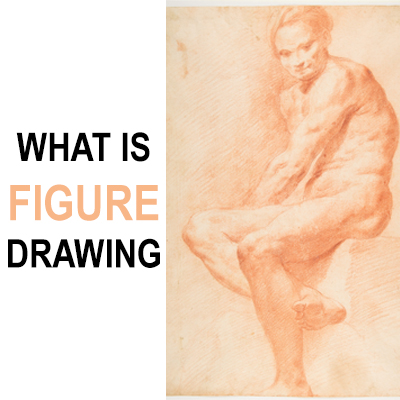
What comes to your mind when you think of figure drawing?
You may imagine artists with sketchpads and pencils circling a model.
But what is figure drawing, exactly? And why is it such an essential skill for all artists to learn?
In this post, we’ll explore figure drawing and its benefits. We’ll also share tips for improving your figure-drawing skills.
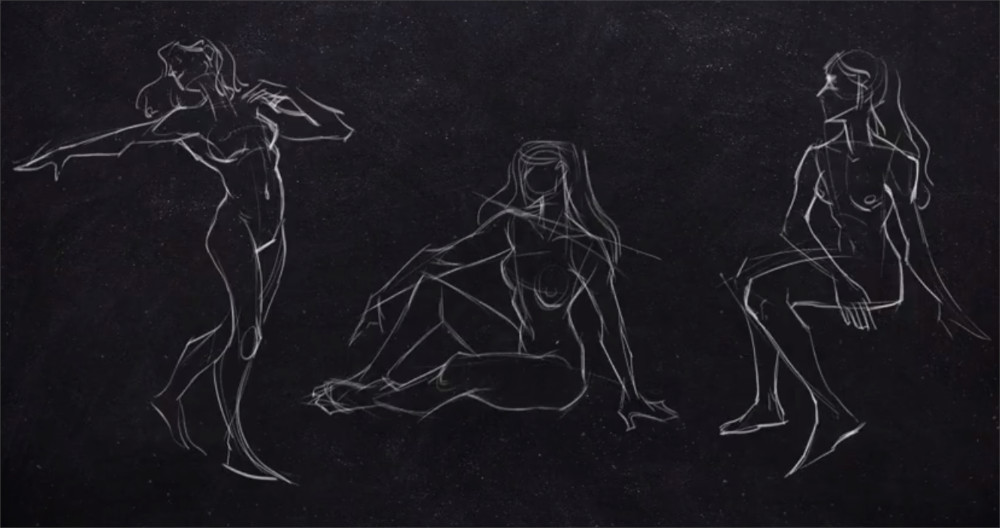
Figure drawing, also known as life drawing, is the art of accurately representing the human figure through drawing. It is often done in a live setting, with a model who is traditionally nude. However, it can also be done from memory or photograph references.
The ultimate goal of figure drawing is to capture the essence of the human body – its muscles, texture, postures, and movement.
It involves mastering proportions, angles, and other details.
Figure drawing is a great way to learn about structure and anatomy. It can help artists develop an understanding of form and shape.
Additionally, figure drawing helps cultivate observational skills that can be applied to other art forms.
Figure drawing has been central to artist training since the Renaissance. Practicing figure drawing is essential for understanding human movement and form complexities.
Figure drawing requires the artist to observe the figure in detail, paying attention to proportion, form, and movement.
Through figure drawing, artists learn how to observe and record the human figure accurately through drawing. They also learn to break down what they see into its parts.
This improves their ability to look at objects from different perspectives and accurately observe them.
Figure drawing helps the artist learn to capture action, movement, and emotion in their drawings.
They learn to pay attention to subtle nuances of figure movement and gesture. This allows them to accurately depict the figure in motion, as well as create dynamic poses that have an emotional impact on the viewer.
By practicing figure drawing, artists can also learn how to use lines and shapes to create a sense of movement and energy. Drawing from life is one of the best ways to capture figures in motion because it lets you observe the figure’s movements directly.
Figure drawing is also a great way to understand human anatomy. While sketching a figure, artists identify the underlying shapes of the muscles and bones that make up a figure’s body.
By studying these shapes, artists can understand how the figure moves and how different body parts interact.
This understanding of anatomy combined with figure drawing techniques can help to bring life and realism to an artist’s work.
Through figure drawing, artists learn how basic shapes like ovals, circles, and rectangles fit together to form a human body.
These shapes can be used as building blocks to create figure drawings with more intense action poses.
By mastering these shapes, artists can create visual shorthand, which helps them quickly sketch out figure poses.
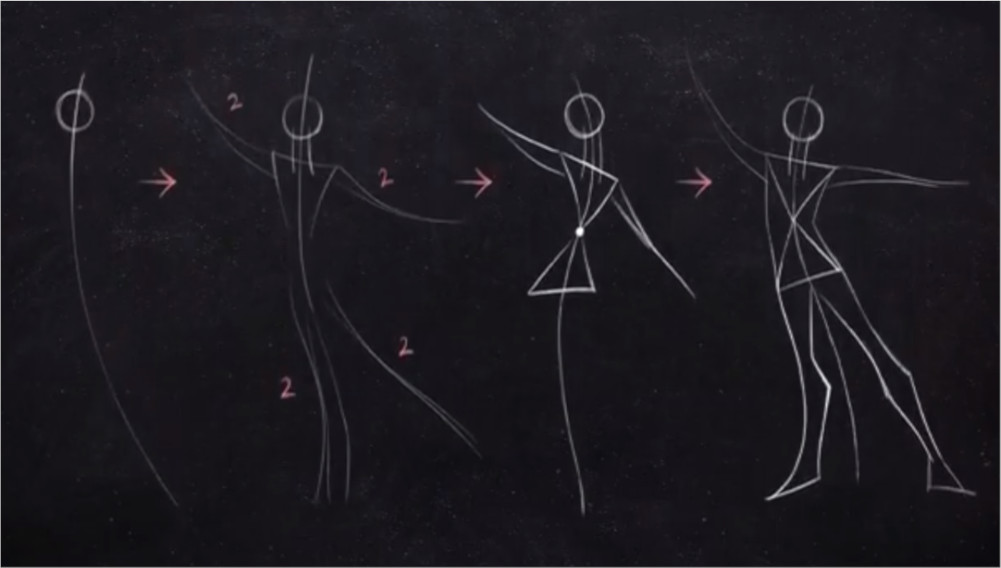
Learning to draw figures correctly is essential for creating realistic works of art. Although figure drawing can initially seem intimidating, with practice and patience, it becomes much easier.
Here are some tips on drawing figures effectively:
Start by sketching a figure-based framework that will serve as your guide. This means drawing a stick figure or bone structure of the figure you are trying to draw and paying attention to the proportions and angles.
Try using light lines that can be erased or altered later if necessary. Ensure the figure is proportionally aligned correctly before moving to the next step.
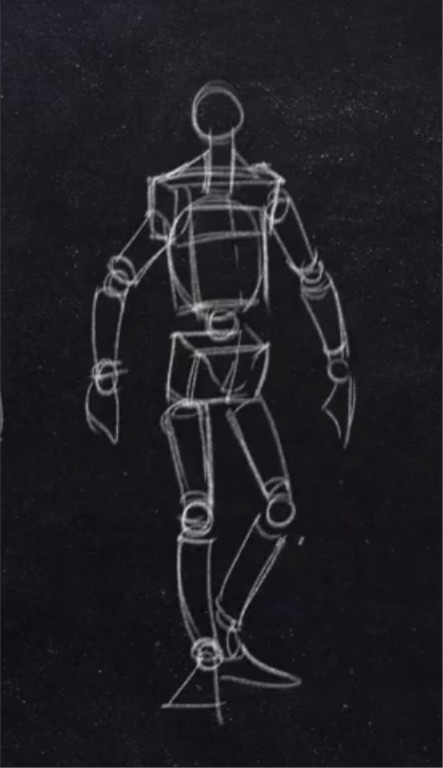
Once you have established the figure’s framework, add volume by sketching simple shapes like circles and ovals. Focus on the individual elements of the figure and draw them one at a time.
You can start by drawing basic forms for the figure’s head, torso, arms, and legs. Consider each element’s size, shape, and location to create an anatomically correct figure.
These shapes will act as a foundation for the muscles and help create the outline of the human figure.
Once you have established the figure’s framework and added basic forms, start outlining the figure. This means drawing a figure that has more of a realistic shape with natural curves and contours.
Pay attention to the figure’s movement and anatomy while drawing to convey its form and texture accurately.
By outlining the figure’s body, you can create the level of detail needed to make the figure look realistic.
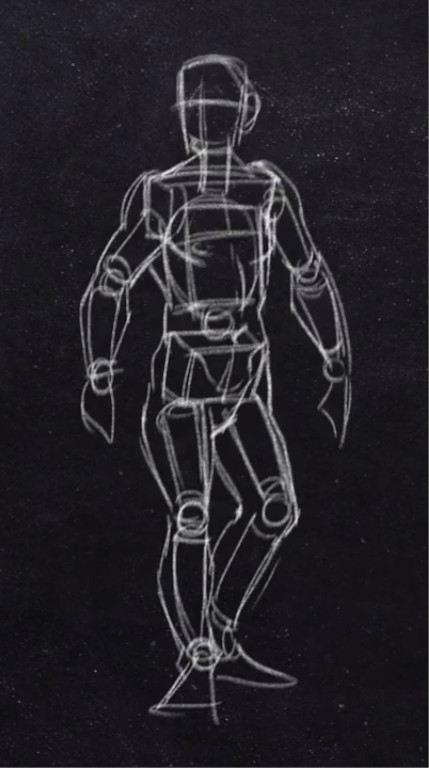
Now that you have established the figure’s framework and outline, it is time to work on its muscles.
Observe the figure’s muscles, paying attention to how they interact with each other and how they change when the figure moves. This will help you create a realistic and anatomically accurate figure.
By accurately depicting the figure’s anatomy, you can create dynamic poses with an emotional impact on the viewer. You can also study anatomy books for inspiration and reference.
By studying human anatomy and sketching out muscles, you can create figure drawings that truly come to life.
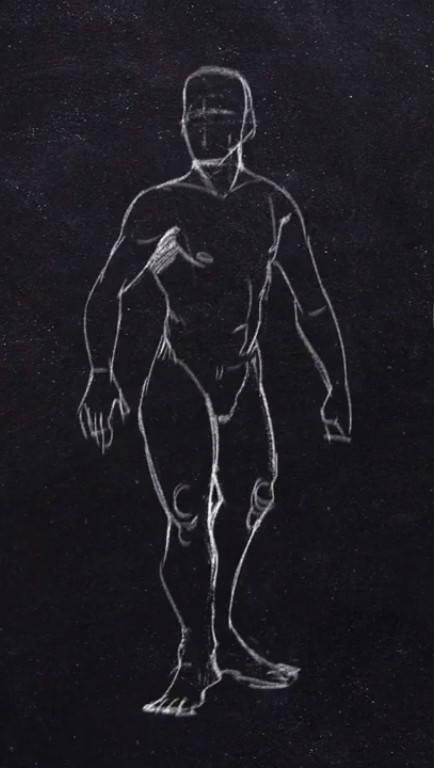
The figure is almost complete. Now it’s time to bring the figure to life by adding details.
Start by adding shading and texture to give the figure depth and dimension. Notice how shadows fall on the figure when it moves and how light affects its shape and form.
You can also add details like wrinkles, facial expressions, hair, and accessories. These details can help bring the figure to life and make it look more realistic.
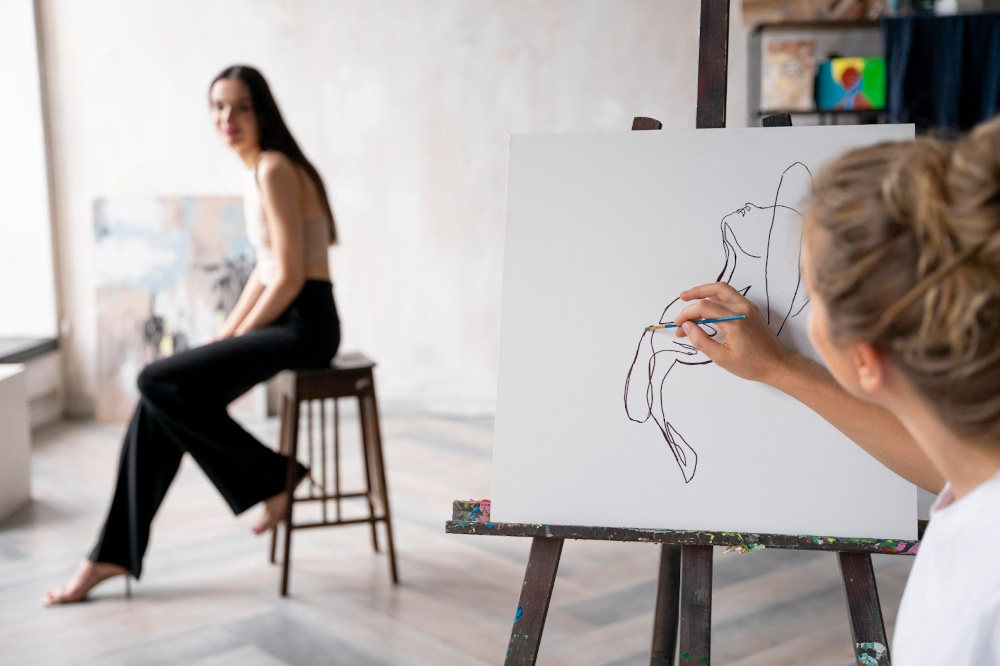
A figure drawing or life drawing class typically involves a group of artists drawing human figures from a live model.
The model is usually positioned in the center of the room, and the artists surround the model. Each artist draws the figure from a different angle.
The model takes on various poses during the session, ranging from short gestures to longer sustained poses.
The artists capture the figure’s essence in their sketches, paying close attention to proportions, form, and movement.
The figure drawing classes are often structured with warm-ups followed by figure work – finally, a critique at the end.
Throughout the figure drawing session, instructors are present to provide guidance and demonstrations of techniques that students can use to improve their figure drawings.
At the end of each figure drawing class, students share their work with peers and receive constructive feedback from the instructor.
The classes generally last between 2-3 hours.
Figure drawing classes are an excellent opportunity to explore the human body in different forms, gain technical figure-drawing skills, and engage with other artists.
Improving your figure-drawing skills can be a challenge. However, you can master the art of figure drawing with focus, dedication, and practice.
Here are seven tips to help you improve your figure-drawing skills:
Before diving into a figure drawing, take time to examine the figure that you’ll be drawing. Take note of the figure’s size, shape, and structure. This will help you create a more accurate figure drawing.
Don’t draw the figure like you imagine the human body to be. Instead, focus on drawing what you see. Visualize what you see, considering all angles and shadows to make your figure drawing as accurate as possible.
While figure drawing accuracy is important, figure drawing needs to capture the figure’s movement and flow.
Therefore, instead of stiffening up when starting figure drawing, focus on the figure’s gesture. Even if the figure drawing isn’t accurate, pay more attention to the action of the pose rather than accuracy. This will help you create figure drawings that are truly alive.
Erasing can be tempting when figure drawing, but resisting the urge is essential. Erasing draws your attention to the mistakes and distracts you from the creative process.
Ignore it and keep drawing. Even if the figure drawing isn’t perfect, it’s essential to keep going. This will help you improve your ability to capture life on paper.
Drawing the complete figure while practicing is important. Avoiding difficult body parts, like hands or feet, can be tempting, but it will only worsen these areas.
It can lead to figure drawings with highly rendered, realistic figures but featuring blocks for feet and hands. That’s why drawing the complete figure is important, even if it doesn’t come out perfectly.
Adding shadows and highlights to figure drawings can create a more polished look. To create shadows and highlights, you should observe how different light sources affect the figure. This can help you add a layer of depth to the figure drawing.
A vital figure drawing tip is to date your figure drawings.
In addition to helping you remember the figure drawing later, this will also help you track your progress. This way, you can see how far you’ve improved your figure-drawing skills.
Figure drawing is an art form; like any art form, it takes practice. Set aside time each week to focus on figure drawing; don’t be discouraged if you make mistakes.
Therefore, practice figure drawing regularly to hone your skills. Set aside time each day to figure drawing, and don’t be discouraged if you make mistakes.
Yes, figure drawing is a particularly challenging form of art. It requires the artist to accurately depict the human figure in all its complex movements and poses while also conveying the figure’s emotion and personality.
To master figure drawing, an artist must practice regularly and study how the figure moves and changes in different poses.
A figure drawing course can be beneficial in teaching the fundamentals of figure drawing and providing practice and feedback from an instructor.
Figure drawing can be an excellent way for beginners to start in art. Not only does figure drawing help you learn the human form, but it also helps to develop your artistic skills.
Figure drawing exercises such as gesture drawing can be beneficial in improving your figure drawing skills and developing your art style.
By observing the figure from different angles and perspectives, you can learn to better represent proportions, structure, and form in your drawings.
Additionally, figure drawing can be a great way to create your characters and practice poses and facial expressions.
Gesture drawing is often used as a warm-up exercise.
The goal of gesture drawing is to capture a subject’s gesture or movement rather than create a realistic or accurate representation. As such, gesture drawings have loose and expressive lines.
In contrast, figure drawing is a type of drawing that focuses on the accurate representation of the human form.
Figure drawing requires more attention to detail and accuracy and understanding of human anatomy and figure structure.
Figure drawing combines line work, shading, highlights, and shadows to create a realistic figure.
So, that’s figure drawing in a nutshell. We hope this has given you a better understanding of figure drawing and the techniques involved.
Figure drawing is a great way to hone your artistic skills and create compelling characters.
With regular practice and dedication, you’ll soon be creating stunning figure drawings.
Our course, “Figure Drawing for Beginners,” can be a good place to get started with this classic art form. However, if you want to take your skills to the next level, check out the course “Fundamentals of Character Design” and “Character Design.”
You can also check out all our online courses. From “Gesture Drawing” to “Digital Drawing” to “Animation,” we have courses on every topic that can help you hone your drawing skills.